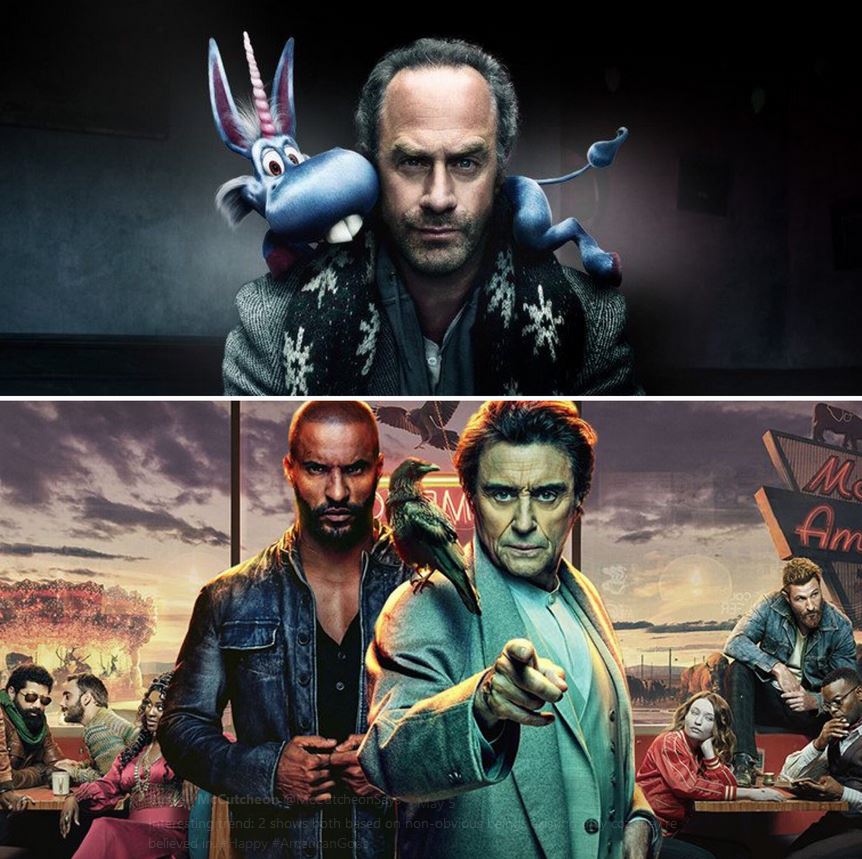
I remarked over on Twitter the other day that there’s a curious correspondence between two shows that are now streaming online. For both “Happy” and “American Gods” are about non-obvious beings who exist solely because people believe in them — cease believing in them, whether a child’s imaginary friend or a god, and they are no more.
While the former is about a fallen police detective who discovers he not only has a daughter who has been kidnapped but that she has an imaginary friend — a flying blue unicorn — who has come to find him to help her out, the latter is about a man named Shadow Moon, newly released from prison, who is drawn into the middle of an impending battle between the old gods (e.g., Mr. Wednesday, Mr. Ibis, and Bilquis, etc.) and the new gods (e.g., Mr. World, Technical Boy, and Media, etc.). And in both cases the existence of the immortals hinges on the beliefs of the mortals. After all, when the child grows up, Happy fades away…
Watch the two trailers:
What’s interesting to me, though, is the way, in both cases, that a discourse on ritual slides into a discourse on belief, as if the actions are somehow secondary to prior, interior states and dispositions. This is rather apparent in “American Gods,” where it’s pretty clear that despite all the talk about belief (as in the line from the narrator, used as the title of this post), we’re actually talking about people doing such things as making sacrifices, or the way the Goddess Easter (an old Germanic god of fertility) merely seems to be doing pretty good because people are out there buying chocolate eggs once a year. It all about bodies doing things, in concert with other bodies and not just a matter of brains thinking things in isolation.
The same happens in the academic study of religion — we now often find an emphasis on the material, such as bodies doing things, but sooner or later those bodies often turn out to be the site where scholars presume that prior and more ethereal sentiments are merely given shape by being voiced and expressed in public. For, given the success, over the past several centuries, of a model of the human as a ghost stuck in a machine (something we still see in the so-called mind/brain debates), it’s not easy to take seriously that these things we call beliefs start in the group, start with collective action, as opposed to starting in either the lone head or the heart.
Which brings to mind something Mike Altman, a colleague here in our Department, said the other day, in a podcast…
“I have a theory: the stories of revivals cause revivals…” 23:00 @MichaelJAltman
— UA Dept. of REL (@StudyReligion) May 3, 2019
(Listen to the podcast here.)
This is quite a shift for some to make: to entertain that potentially non-intention action, in large scale groups where they are repeated and adopted for innumerably different reasons, may be behind social life — a social life that is later signified and represented as if driven not only by so-called great men (that we now easily see as a simplistic representation of the past) but also by so-called great ideas and individual beliefs (which, it turns out, may be an equally simplistic attempt to explain social life).